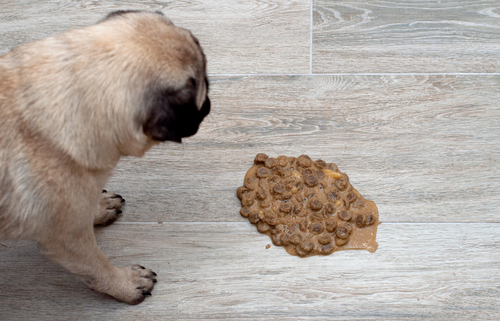Dogs & Vomiting
There are times where dogs get into things that they should not. Think about toxic foods, chemics or entire indigestible objects. When this happens, your dog may need to vomit up and eject the product to prevent further issues from occurring. As always, you will need to contact your veterinarian immediately if there is a major issue. Be sure to read on to learn more.
Your veterinarian may instruct you to give your dog hydrogen peroxide at home to induce the vomiting. They should tell you exactly how much hydrogen peroxide to give your dog. The rule of thumb is to give 1 teaspoon for every 10 pounds of body weight. This may be repeated once if your dog does not vomit within 15 minutes.
You need to keep track of when your dog ingested something. Typically, two hours after ingestion, the substance has already been absorbed or has moved out to the stomach and into the small intestines. Keep in mind that making your dog throw up will not help in this situation. There are certain items such as bleach that may cause more damage to the esophagus and mouth if they are vomited back up. Chemicals like bleach are better to let settle in the stomach until dissolved.
Very important: Dogs that lack a gag reflex should not be made to vomit. If your dog vomits and is unable to swallow properly, they could choke on their vomit and aspirate into their lungs causing a severe and potentially fatal pneumonia. Always pay close attention to the signs and symptoms of toxic ingestion.



